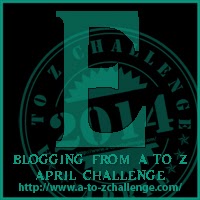 Some time ago I switched the development of the Echelon roleplaying game from Dungeons & Dragons 3.x to Pathfinder. I figured there was more material more readily accessible.
Some time ago I switched the development of the Echelon roleplaying game from Dungeons & Dragons 3.x to Pathfinder. I figured there was more material more readily accessible.
I was right about that. In fact, it turns out that individual topics could not fit entirely in my brain — there was too much material, spread across too many books. I started gathering and organizing the information by type. I realized that if I find these books useful, others might also, so I improved their organization and working to make the information more useful.
There are several steps to this.
First, the information is organized so related information is gathered together. Each source data file gets parsed and similar contents gathered together — and where appropriate, merged. The spell lists from all sources get combined by class (all bard spells together, all cleric spells together, etc.). “Class subfeatures” such as individual rage powers and individual rogue talents are similarly grouped under a single heading.
Second, information is cross-referenced and updated as needed. Individual spell ‘level’ fields are updated to include new spell lists, spell lists include new spells, and so on.
Third, prerequisites are parsed and, where possible, explicitly and specifically linked. Of somewhat over 5,000 prerequisites I have parsed, somewhat more than 90% can achieve precise links to other objects. Of the remainder, many cannot yet be linked simply because I have not yet incorporated the information they will link to, and most of the remainder are basically “weird”, not actually having specific things to point to. This allows me to do the next thing.
Fourth, where there are relationships between objects, I tend to diagram them. I have thousands of pictures showing how different game elements are prerequisites of each other.
Fifth, game elements are applied as needed. Pathfinder is a game of ‘design by exception’, where many things describe simply how they change something else (subdomains change domain powers and domain spell lists, and archetypes change class feature sets). I take these game elements and apply them to make these changes, and present the results so it can be seen exactly how the changing element alters the base element. For example, I present not only the base domain and the subdomains that change it, I present also the new domains in full, as if they are domains themselves. Archetypes get similarly applied to base classes and the results presented as variant classes.
It’s a lot of work, but I’m really pleased with the results so far. The information is accessible and as complete as I can reasonably make it. I look forward to printing a physical copy to have on my shelf.
Or shelves. This thing is getting huge.